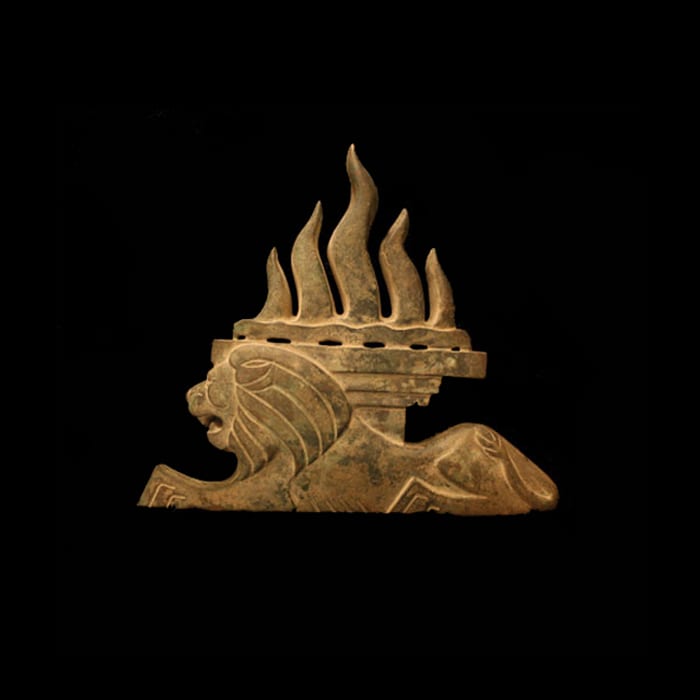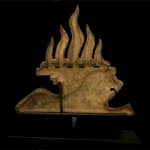Graeco Roman Bronze Sculpture Of a Lion, 200 BCE - 200 CE
Bronze
height 29.2 cm
height 11 1/2 in
height 11 1/2 in
SP.589
Further images
The lion we see here is not the lion of Heracles, or of a Roman hunt. The dramatic strength of its composition, the sweeping, bold curves of its majestic paw,...
The lion we see here is not the lion of Heracles, or of a Roman hunt. The dramatic strength of its composition, the sweeping, bold curves of its majestic paw, its regal mane- give away its Biblical origin. It was not the dainty hands of one trained in the Imperial school that tempered and expressed this bronze, but the large and powerful hands of a Jewish artist, which yielded from the metal the rich and valiant figure we see here. Above it towers an imposing torch, each pyre of flame substantial enough to merit a subject within it self, and wrought finely enough to merit an artist of its own. This piece, a torch rising from behind the lion calls to mind the biblical passage from Zechariah, in which God claims that in the day he makes Jerusalem the capital of the world, he “will make the clans of Judah like a firepot among pieces of wood and a flaming torch among sheaves, so they will consume on the right hand and on the left all the surrounding peoples, while the inhabitants of Jerusalem again dwell on their own sites in Jerusalem.” Judah, the largest and most powerful of the Jewish clans was traditionally represented as the lion. This lion and torch may very well have been mounted on the door of an opulent synagogue, a reminder to the Jewish people that the world was, and again will be theirs. To a frustrated and down-trodden Jewish artist, whose worship made his life so very difficult within the pagan-dominated world, this piece acted as an emblem of hope and a symbol of strength. Out of the handful of pieces of art that remain from Classical antiquity, only the tiniest portions of them are Jewish. Out of the pieces of Jewish art that remain, the vast majority are small utilitarian items like clay pots. A glorious bronze work such as this is one of the most absolutely final links to the true art and spirit of the Jewish people of the Classical era. This piece stands as a testament to the resilience and capability of a people, and that even in a state of oppression, the art and creativity of humanity can flourish. That we can be lions, light, with the torch of our pride and faith, the darkest of straights, and the most hopeless of circumstances.





